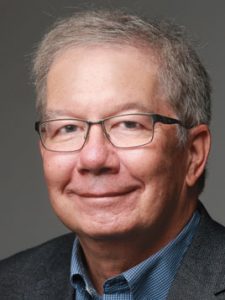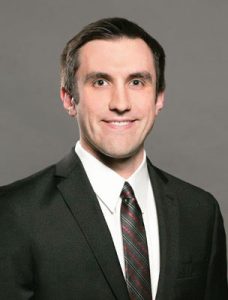 Kimberly-Clark executive Robert Martin offers some insight into the air filtration market.
Kimberly-Clark executive Robert Martin offers some insight into the air filtration market.
By Steve Warner, Contributing Editor
Robert Martin is a certified air filtration specialist and the category marketing manager for Kimberly-Clark filtration products.
In addition to serving as a filter media supplier, Martin supports the National Air Filtration Association as both the chair of the Marketing & Membership Committee and member of the Board of Directors.
Textile World: Please provide a brief description of Kimberly-Clark Professional Filtration.
Rob Martin: Kimberly-Clark produces a wide variety of nonwoven products that power our own brands as well as other brands in the wipes, industrial, car cover, hygiene, and of course filtration markets. Within Filtration, we primarily make man-made nonwovens, and our products serve both the liquid and air filtration categories.
In liquid filtration, we produce a variety of spunmelt and composite materials that are used in industrial settings, primarily to filter coolants in metal working and other machining processes, often in the automotive manufacturing space.
However, the bulk of our focus is the air filtration segment. For that market, we offer a broad portfolio of electret charged media that are used in a wide array of applications. Those applications include residential and commercial HVAC, car cabin air, and air purifier applications. Each area is seeing steady growth as end-users become more aware of their ability to improve the air they breathe at work, in their cars, and in their homes. In each segment, our customers value our media’s ability to filter fine particles, which are the ones that are most likely to be inhaled and therefore the most critical to human health. Our media’s electret treatment enhances the underlying mechanical structure’s ability to capture those particles. By balancing the charged treatment with the media’s mechanical structure, our products can deliver strong particle capture while delivering low airflow resistance, which helps save energy and deliver better cost-in-use to end-users.
TW: What type of industry needs impact your business?
Martin: Kimberly-Clark Professional customers typically are looking for two things: Unsurprisingly, the first is to get the right particle filtration for their application. Getting the correct air quality is key.
The second driver is cost-in-use. Changing out filters can be a significant budget line-item, so a longer-lasting filter can help justify a higher unit price by reducing change outs. That saves on individual unit purchase and the labor expense that comes with having people perform the changes.

TW: What are customers looking for in filter media?
Martin: Filter media is a big driver of the industry needs, particularly cost-in-use since it’s the media that does the actual filtering.
There are two drivers of cost-in-use that the air filtration industry really focuses on. The first is dust holding capacity, which refers to how much particulate the filter can handle before it starts to plug up and cut off the airflow.
The second is pressure drop or the airflow resistance of the filter, which indicates how hard a system must push air to get it through the face of the filter and can have an effect on energy consumption. Airflow resistance can be helped by constructing filters using electret-treated media.
Both attributes are driven by the choice of media and the filter construction, and they can give a sense of which filters have the potential to put more strain on a system, whether they’ll need fewer change outs than other filters on the market, and whether or not the filter might result in higher energy consumption.
TW: What is the rough size of the filtration market?
Martin: We mostly track the size of the filter media market. Globally, it is a multi-billion-dollar market that includes both air and liquid filtration across a wide variety of end-use applications, including automotive, HVAC, industrial, and food and beverage among other applications. The split between air and liquid filtration is about 50/50, with a little skew towards air filtration. There are a pretty wide variety of nonwovens, ranging from spunbond, meltblown, nanofibers, fiberglass, carded and needle punched materials.
TW: Where is the geographic growth in the filtration media industry?
Martin: What’s interesting about this market is that we see balanced growth globally. While markets like China get a lot of attention, it may surprise some people that we also see continued solid growth in North America. Different regions have somewhat different market drivers. In particular, there are different regulations and building requirements that require different levels of performance and product formats. For instance, European building regulations tend to require a higher level of filtration than would be standard in the United States. We see most of these markets growing steadily in the mid-to-high digits or low double digits.
TW: What are industry market segments that are considered hot markets for air filtration?
Martin: Actually, I expect growth in most segments of the air filtration industry. If I had to pick a couple areas that stand out, I’d say that higher filtration efficiency products continue to be a big driver. There’s a slow but steady migration towards improved filtration, particularly in places like hospitals and cleanrooms as air quality becomes more and more top of mind in the market.
Another is car cabin air filters. A couple of decades ago, car cabin air filters were not a standard feature. Now they are included to benefit the air quality of the people in the car. As a result, the market is only going to pick up as consumers begin to expect air filtration as a standard feature in new vehicles.
TW: What are some of the key challenges in the industry?
Martin: It continues to revolve around education. Most consumers and even business users aren’t familiar with the air filters they use. They often don’t think about filters having to be changed which may have larger implications such as equipment failure. This lack of education has a secondary effect of making it tough for some filter manufacturers to capture full value for their products. After all, it’s hard to get people to pay more for a better filter product when much of the market is still trying to understand exactly what it is they are buying.
Fortunately, there’s been a lot done by companies in the industry. In addition, I am a board member for the National Air Filtration Association, which has been working hard to raise understanding and help end-users understand the value of benefits that filters are generating.
TW: What are the major trade shows for the filter media suppliers?
Martin: In the United States, the key trade show is the annual Association of the Nonwoven Fabrics Industry’s (INDA’s) Filtration show. Filtech is held every 18 months in Germany and has more of an emphasis on the European market. Both shows give media suppliers and filter manufacturers a great forum to interact, learn more about the filtration industry as a whole, helping to drive the market forward.
Editor’s note: Stephen M. Warner, Blaine, Minn., is publisher of BeaverLake6 Report, beaverlake6.com, a Web-based newsletter reporting on trends, data and issues that he feels influence the technical textiles industry. He also is former president and CEO of Industrial Fabrics Association International.
March/April 2017




